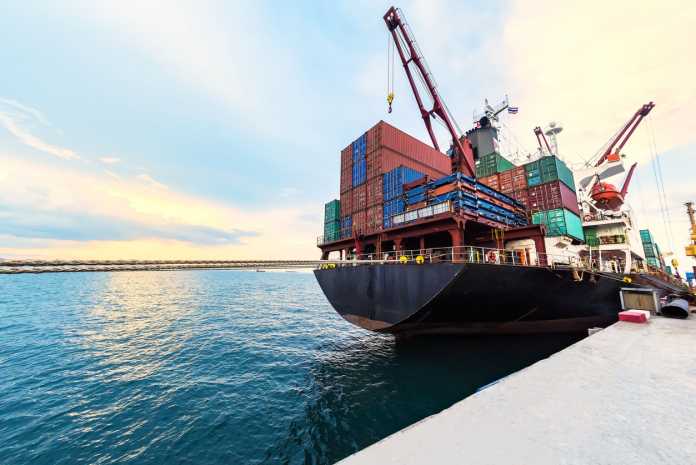For convenient transportation of goods by sea, rail, and road, metal cargo containers are widely used worldwide. When reloading from one mode of transport to another, the container itself is reloaded. Reloading of it is not required, though.
In this article, you will find answers to the question of how to unload a shipping container and load it. We, at Pelican Containers, know the process from a to z as we have broad expertise in the sphere and provide new or used containers for sale, ensuring their top quality and reliability.
Container loading methods
There are three ways to load goods into a container:
• “Alive”
The loading of the metal module delivered to the place of loading by the carrier is carried out in the presence of the consignor of the goods or his representative. A certain time is allotted for loading, which is included in the cost of loading operations. If it is exceeded, then the additional time is paid by the person/company who caused the delay.
• “Leave and take”
The carrier company delivers the cargo module to the place of its loading and leaves it for a certain period, which can be several days. This method is more expensive than the previous one but allows you not to rush to download. The loaded container is sealed.
• Loading in the warehouse
The consignor brings the cargo to the warehouse, where it is placed in a container according to all the rules. The container is sealed and delivered to the place of loading onto the ship.
Basic rules for loading/unloading a shipping container
Of course, the answer to the question of how to unload or load a shipping container is to take into account the characteristics of the cargo:
- piece and fragile goods are loaded manually;
- goods stacked on pallets are loaded using a forklift;
- goods in bags are loaded mechanically;
- goods sensitive to moisture are transported in a special water-repellent container;
- bulk materials are loaded/unloaded mechanically, avoiding air dusting;
- goods of animal origin without packaging are loaded in accordance with sanitary standards. All workers must have sanitary books;
- long materials are pulled together to prevent their collapse.
Basic rules for loading / unloading Pelican Containers products to / from a ship
All standard sizes of metal modules are adapted for loading and unloading operations by cranes with mechanical grips or slings with four branches. For loading and unloading of containers, the total weight of which in the loaded state does not exceed 20 tons, forklifts can be used. The use of universal and special lifting devices allows you to:
- increase the productivity of work and their safety;
- reduce the risk of damage to the metal module;
- increase the operational period of the container.
The best way to load shipping containers onto a ship is to use a rail-mounted gantry crane. After loading the vessel, the boom is raised. When unloading the modules on the berth, berth container loaders are used, the capacity of which can reach 40 containers per hour. In warehouses, railway or automobile cargo fronts, pneumatic or wheeled container gantry cranes are used.
To optimize the performance of loading and unloading operations allows the use of a hydraulic loading and unloading device (GPRU), which replaces the crane. The use of the GPU provides:
- the ability to manage the work in automatic mode;
- thanks to tilt sensors – notification of an error in the location of the module;
- prompt unloading of the container.
Sea container requirements
In accordance with the contract, the following can be engaged in the preparation of packaging for cargo transportation: the carrier at its own expense or the expense of the consignor, the sender at the expense of the carrier. The container must:
- be in good working order, not having mechanical damage and traces of corrosion;
- be cleaned and disinfected inside and out;
- tank containers – have serviceable drain devices and fittings.
What parameters determine the cost of unloading and loading operations
The price of unloading and loading activities is affected by:
- dimensions and weight of cargo;
- the number of involved loaders;
- nomenclature of equipment with which the work is performed.
The rate is determined by the sea line along which the cargo is transported and the terminal at which the cargo is processed.
How to eliminate risks
Depending on the selected loading method, the place of transfer of risks to the transport company can be as follows:
- Your warehouse.
- Consolidation warehouse of a transport company.
- Container terminal of a transport company.
- Loading port.
Each option has its own advantages and disadvantages. With an increase in the share of participation of the transport company in the process, the cost of services will also increase. However, the risks will also decrease proportionally. In addition, you can choose a freight, in which not only the loading but also the unloading of the sea container is also the responsibility of the transport company.
If you decide to choose the golden mean, the best option is to buy or rent a transport module from a reliable specialized company, namely Pelican Containers. This company provides a wide range of containers, and their quality and durability are beyond doubt.
Conclusion
Using container transportation, the transport chain includes cars, railways and ships. Loading a sea container in a port is the most time-consuming process that can take place according to several schemes.
Of course, this process requires a competent approach, like any other lifting work. Loading and unloading of shipping containers should be carried out by highly qualified specialists using high-quality equipment.
But, it is worth saying that Pelican Containers products have a very high level of strength, which minimizes the occurrence of any problems and risks during the loading and unloading process. In any case, this process must be treated very responsibly in order to avoid trouble and damage to containers and their composition. This is the key to the success and effectiveness of this process.
https://advego.com/antiplagiat/status/21279266/

































































